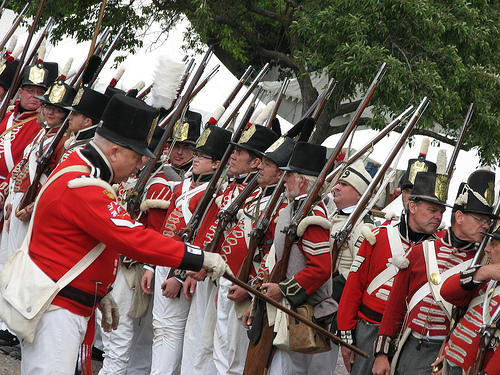
“Thord fought in more than ten wars while serving in the armies of the British Empire, Germany, China, Mexico, Russia and the United States, among others.”
FORGET THE Dos Equis beer pitchman, the title of “Most Interesting Man in the World” surely belongs to Sweden’s Ivor Thord.
Born in 1878, the Stockholm native worked as a sailor, mercenary, planter, prison guard and a colonial policeman. He was a prolific writer and linguist and even founded an investment bank on Wall Street. Even more amazing however is the fact that over a 22-year period, Thord fought in more than ten wars while serving in the armies of the British Empire, Germany, China, Mexico, Russia and the United States, among others.

The son of an ordinary schoolteacher and the brother of noted artist Gunnar August Hallström and archeologist Gustaf Hallström, young Ivor ran away at the age of 15 to join Sweden’s merchant fleet. After sailing the world for two years, he settled in South Africa.
In 1897, the 19-year-old Thord enlisted in the British colonial Cape Mounted Rifleman.
A veteran of both the Bechuanaland and Pondoland campaigns, he’d later see action in the Second Boer War (1899 to 1902).
Following the conflict, Thord, who had since changed his name to Grey, joined South Africa’s national police force. A part-time militia officer, he was called up in 1906 to help suppress the Bambatha Rebellion, a short-lived Zulu uprising in Natal.

From there he crossed into German South-West Africa and fought as an officer in the Kaiser’s colonial Schutztruppe during the bloody 1906 Damara campaign.
Having spent more than a decade in Africa, Thord-Grey packed up and moved to the Far East. Settling in the Philippines in 1908, he joined the U.S. Army’s paramilitary constabulary that was engaged in battling hostile tribes throughout the islands.
In 1909, he made his way to Indochina to assist French Foreign Legion units there defeat Tonkin pirates.
Then in 1912, Thord-Grey, now 35, headed for China to join the forces of Sun Yat Sen and to take part in a civil war that was raging there.

The next year, he travelled to Mexico where he fought as a captain under the banner of the legendary Pancho Villa. Over the 18 months that followed, Thord-Grey rose through the ranks of the revolutionary army, during which time he worked closely with pro-Villista Yaqui and Tarahumara tribes. He became known as El Sueco or “the Swede.” By 1914, he was a general in the Mexican army.

When war erupted in Europe that same summer, Thord-Grey sailed for England to enlist in the Northumberland Fusiliers. Initially commissioned as a major, in 1915 he was promoted to colonel and given command of a battalion on the Western Front, although his earlier ties to Germany aroused some suspicion in British intelligence.
Thord-Grey later transferred to the Canadian army and in 1918 he volunteered for the Siberian Expeditionary Force sent by the Allies to defeat the Bolsheviks.

The following year, he joined the Russian “White Army” and became a general in charge of a division. Wounded in heavy fighting in the Urals in 1919, Thord-Grey recovered and was appointed to the role of top envoy to the Allied intervention force in Vladivostok.
After the collapse of the White Army, Thord-Grey finally decided to give peace a chance. He moved the United States where he founded the bank I.T. Gray & Co. He married, raised a family and divided his time between an estate in Connecticut and one in Florida.
After achieving full citizenship in 1934, Thord-Grey was appointed major general of Florida’s National Guard.
Later in life, he wrote an English-Tarahumara dictionary and produced a volume recounting his exploits in the Mexican Revolution called The Gringo Rebel.
He died in 1964 at the age of 86.










Outstanding article.
Excellent piece, thanks